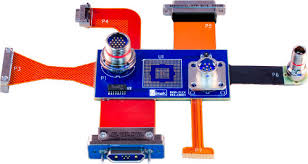Understanding the Rigid-Flex PCB Assembly Process in China

As modern electronic devices become smaller, more functional, and increasingly sophisticated, the demand for advanced circuit board technologies is soaring. One solution that has gained prominence across industries is China PCB assembly. This innovative technology combines the structural integrity of rigid boards with the adaptability of flexible circuits into a unified design.
With its robust electronics manufacturing infrastructure and cost-effective services, China has become the go-to destination for rigid-flex PCB assembly. But what does the assembly process actually entail, and why is China so well-suited for it? This article offers a comprehensive look into the rigid-flex PCB assembly process in China, helping you understand how your designs move from concept to fully assembled product.
What Is a Rigid-Flex PCB?
Before diving into the assembly process, it’s important to understand what makes rigid-flex PCBs unique. These boards:
-
Combine both rigid (hard) and flex (bendable) substrates
-
Are usually made up of multiple layers interconnected by plated through-holes
-
Can be folded or bent during assembly and application without compromising integrity
Rigid-flex PCBs are commonly used in industries such as aerospace, medical devices, automotive, military, and consumer electronics—especially where space constraints and performance reliability are critical.
The Rigid-Flex PCB Assembly Process: Step-by-Step
Step 1: Design & DFM Analysis
The process begins with design submission from the customer. Most Chinese manufacturers prefer to receive Gerber files, BOM (Bill of Materials), assembly drawings, and pick-and-place files.
Before moving forward, experienced suppliers perform Design for Manufacturability (DFM) checks to:
-
Identify potential layout issues
-
Recommend changes to reduce complexity or cost
-
Validate stack-up and material compatibility
This phase ensures that the design is optimized for efficient manufacturing without defects.
Step 2: Material Selection
Rigid-flex PCBs typically use a combination of FR-4 for rigid parts and polyimide for flex sections. Choosing the right materials is critical to achieving the required mechanical and thermal performance.
In China, many suppliers source materials locally or from reputable international vendors (like DuPont or Panasonic), ensuring:
-
Cost savings through domestic supply chains
-
High-quality laminates and adhesives for complex stack-ups
-
Consistent availability even during global shortages
Step 3: Rigid-Flex Board Fabrication
Fabricating a rigid-flex PCB is a highly specialized task involving both flex and rigid PCB production techniques. Key steps include:
a) Layer Lamination
Flexible and rigid layers are laminated together in a cleanroom environment using adhesives and heat. Multi-layer boards may include several cycles of lamination, drilling, and copper plating.
b) Laser Drilling
Laser technology is often used to create microvias between layers, especially in high-density interconnect (HDI) designs.
c) Imaging & Etching
Copper layers are patterned using photoresist and then etched to form the circuit paths.
d) Plating & Surface Finishing
Via holes are plated with copper, followed by surface finishes such as ENIG, HASL, or OSP, depending on application needs.
e) Flex Area Protection
Coverlay films or flexible solder masks are applied to flex areas to protect the circuitry during bending.
This entire process is tightly controlled and monitored using AOI (Automated Optical Inspection) and X-ray testing to detect defects before assembly.
Step 4: Component Procurement
Reliable Chinese manufacturers offer turnkey services, which include sourcing all the components listed in your BOM.
Thanks to China’s extensive electronics ecosystem, manufacturers have access to:
-
Global distributors (e.g., DigiKey, Mouser)
-
Local equivalents with cost-effective pricing
-
On-hand inventory for faster turnaround
Some suppliers also offer component verification, ensuring you don’t receive counterfeit or substandard parts.
Step 5: SMT and THT Assembly
Once the board is fabricated and components are ready, assembly begins.
a) Solder Paste Printing
A stainless steel stencil is used to apply solder paste precisely to surface mount pads on the rigid areas.
b) Pick and Place
High-speed machines place components onto the board, guided by the pick-and-place file and vision systems.
c) Reflow Soldering
The assembled board passes through a reflow oven, melting the solder paste and securely attaching components.
d) Through-Hole Assembly (if required)
If the design includes through-hole parts (THT), they are manually or automatically inserted and soldered using wave soldering or selective soldering.
Step 6: Inspection & Testing
Quality control is taken very seriously in Chinese assembly houses. Typical testing and inspection steps include:
-
Automated Optical Inspection (AOI)
-
X-Ray Inspection for BGA and fine-pitch components
-
Functional Testing based on customer-provided test plans
-
Flying Probe and In-Circuit Testing (ICT) (for complex boards)
Only after passing these tests are boards packaged and prepared for shipping.
Step 7: Packaging & Delivery
The final step involves safe, ESD-compliant packaging of the rigid-flex assemblies. Many Chinese suppliers offer:
-
Vacuum-sealed moisture barrier bags
-
Custom labeling and barcoding
-
Worldwide shipping with tracking through FedEx, DHL, or UPS
For international clients, manufacturers often assist with customs paperwork and logistics coordination.
Why China Excels at Rigid-Flex PCB Assembly
So, why is China such a hotbed for rigid-flex PCB manufacturing?
-
Cost Efficiency: Lower labor and operational costs without compromising quality
-
Advanced Equipment: From laser drills to reflow ovens, top-tier facilities are common
-
Skilled Workforce: Engineers and technicians specialize in complex builds
-
End-to-End Capabilities: Everything from PCB fabrication to final product assembly under one roof
-
Global Experience: Most Chinese manufacturers are used to dealing with Western clients and global compliance standards
Conclusion
Rigid-flex PCB technology is enabling today’s most exciting innovations, from foldable phones and compact medical wearables to aerospace systems and automotive electronics. But behind every great product is a manufacturing process that’s both technically advanced and cost-efficient.
China has mastered this balance. With state-of-the-art capabilities, a vast supply chain network, and years of expertise, Chinese manufacturers make rigid-flex PCB assembly faster, more affordable, and more reliable than ever.
Whether you’re building a prototype or scaling to production, understanding the assembly process and working with the right Chinese partner can make all the difference.
Need help finding a rigid-flex assembly partner in China or preparing your design files? Let me know—I’d be happy to guide you.
Would you like the next (4th) blog article now?








